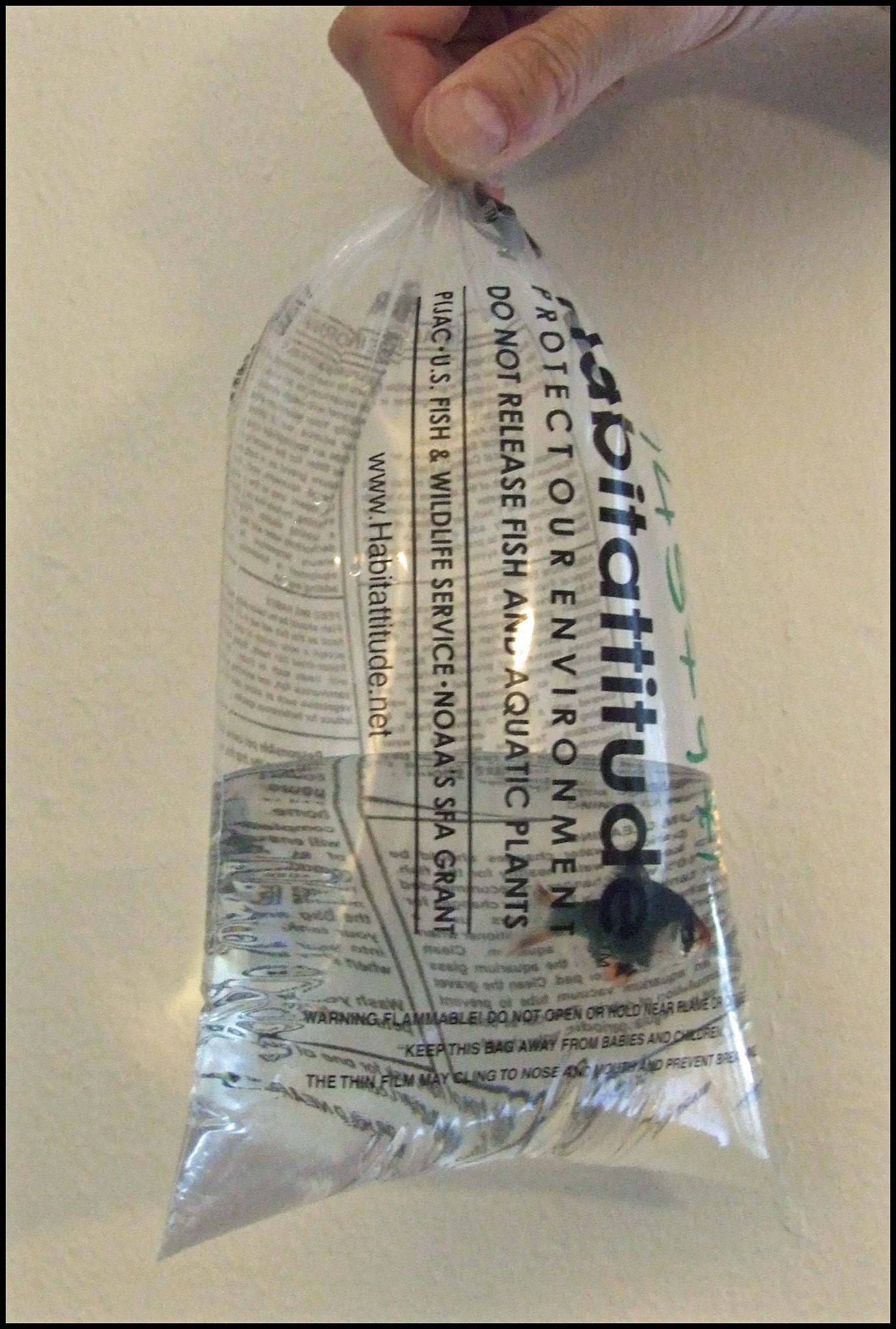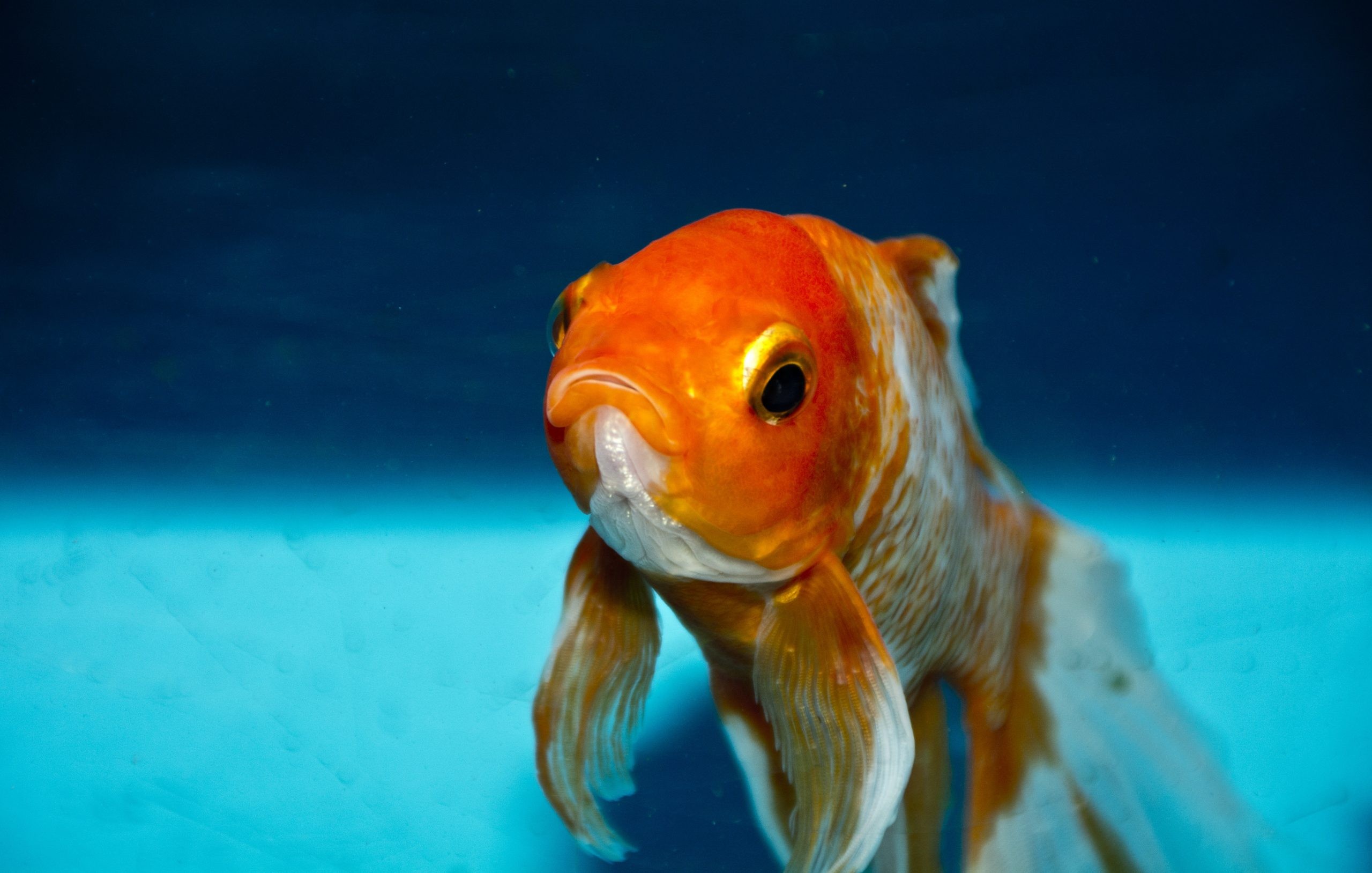Moving can be stressful, especially when you have aquatic companions. Knowing How To Travel With Fish safely, whether it’s a short trip across town or a long-distance relocation, is crucial for their well-being. Improper transport can lead to stress, injury, or even death. This guide provides detailed instructions on how to transport your fish by car or plane, ensuring a smooth and safe journey for your finned friends.
 Fish in a bag being prepared for transport
Fish in a bag being prepared for transport
Traveling with Fish in a Car
Transporting fish in a car requires careful planning and execution. While keeping your fish in their regular aquarium might seem easiest, it’s often the riskiest option. Here’s a breakdown of the best practices:
Avoiding Aquarium Transport
While technically possible, moving an aquarium with fish inside is generally not recommended, especially glass aquariums. The sloshing water and unsecured environment can cause significant stress and potential injury to the fish. If you must transport the aquarium, significantly reduce the water level to minimize spillage and movement. Remove any decorations or objects that could shift and harm the fish or damage the tank.
The Downside of Buckets
Using a bucket for fish transport is also discouraged. Buckets are prone to tipping, especially during sudden stops or sharp turns. A spill could be fatal to your fish. If a bucket is your only option, fill it minimally and have a passenger hold it securely to minimize movement.
The Ideal Method: Plastic Bags
Using a clear, strong plastic bag is generally the safest and most recommended way to transport fish in a car. Here’s how:
- Prepare the Bag: Fill the bag halfway with water from your fish tank. This water contains the necessary beneficial bacteria and maintains the proper pH balance for your fish.
- Introduce the Fish: Gently place your fish into the bag.
- Oxygen is Key: Fish can typically survive for about an hour in a sealed bag. For longer trips, consult your local pet store or aquarium shop about adding pure oxygen to the bag. They can properly seal the bag with oxygen to ensure your fish has enough to breathe.
Flying with Fish: A Guide to Air Travel for Your Aquatic Pets
Taking fish on a plane requires even more preparation and adherence to specific airline regulations. Fish are typically allowed as carry-on items, but it’s crucial to confirm this with your airline well in advance.
Preparing for the Flight
Preparation begins several days before your flight:
- Tank Cleaning: Regularly clean the aquarium in the days leading up to the move to ensure water quality.
- Water Quality: Ensure the water is properly balanced.
- Reduce Feeding: Stop feeding your fish one to two days before the move. This reduces waste production and helps keep the water cleaner during transport.
 Goldfish swimming in clear water
Goldfish swimming in clear water
Packing for Air Travel
- Bags are Essential: Use clear, strong plastic bags, filling them only halfway with water from the tank.
- Oxygenate: Visit your local aquarium or pet store to have them add pure oxygen to the bag. This is vital for long flights.
- Insulation (Tropical Fish): Tropical fish require a stable water temperature. Purchase insulated travel bags to maintain the correct temperature during the flight. Goldfish, on the other hand, generally don’t require insulation.
- TSA Considerations: Navigating airport security with live fish can be tricky. Contact the TSA in advance to understand their specific regulations and procedures for transporting live animals.
Reintroducing Your Fish to Their New Home
Once you arrive at your destination, reintroducing your fish to their new aquarium is a critical step:
- Gentle Introduction: You can either carefully pour the fish and the water from the bag directly into the aquarium.
- Quarantine Option: Alternatively, keep the fish in a smaller, temporary tank to observe them for signs of stress before transferring them to the main aquarium.
- Priority Unpacking: Make your fish a priority. Unpack them and set up their aquarium as soon as possible after arriving.
Essential Tips for Safe Fish Transport
To ensure a stress-free and successful relocation for your fish, keep these tips in mind:
- Gather Supplies Early: Have all necessary supplies ready well in advance. This includes plastic bags, buckets (if absolutely necessary), packing tape, a fishnet, a siphon hose, and any other packing materials.
- Secure the Container: Whether using a plastic bag or a bucket, ensure it is properly sealed and secured to prevent spills.
- Handle with Care: Fish tanks are fragile. Wrap them carefully in bubble wrap or packing paper to protect them from damage during transport.
- Gentle Loading: Load and unload the fish tank and accessories carefully to avoid any sudden movements or impacts.
- Water Quality Monitoring: Continuously monitor the water temperature and quality throughout the journey to ensure your fish remain comfortable and healthy.
Conclusion: Ensuring a Safe Journey for Your Finned Friends
Traveling with fish requires meticulous planning and execution. By following these guidelines, you can minimize stress and ensure a safe and comfortable journey for your aquatic companions. Remember to prioritize their well-being throughout the entire process, from packing to reintroduction. With proper preparation, you can successfully relocate your fish and help them thrive in their new home.

